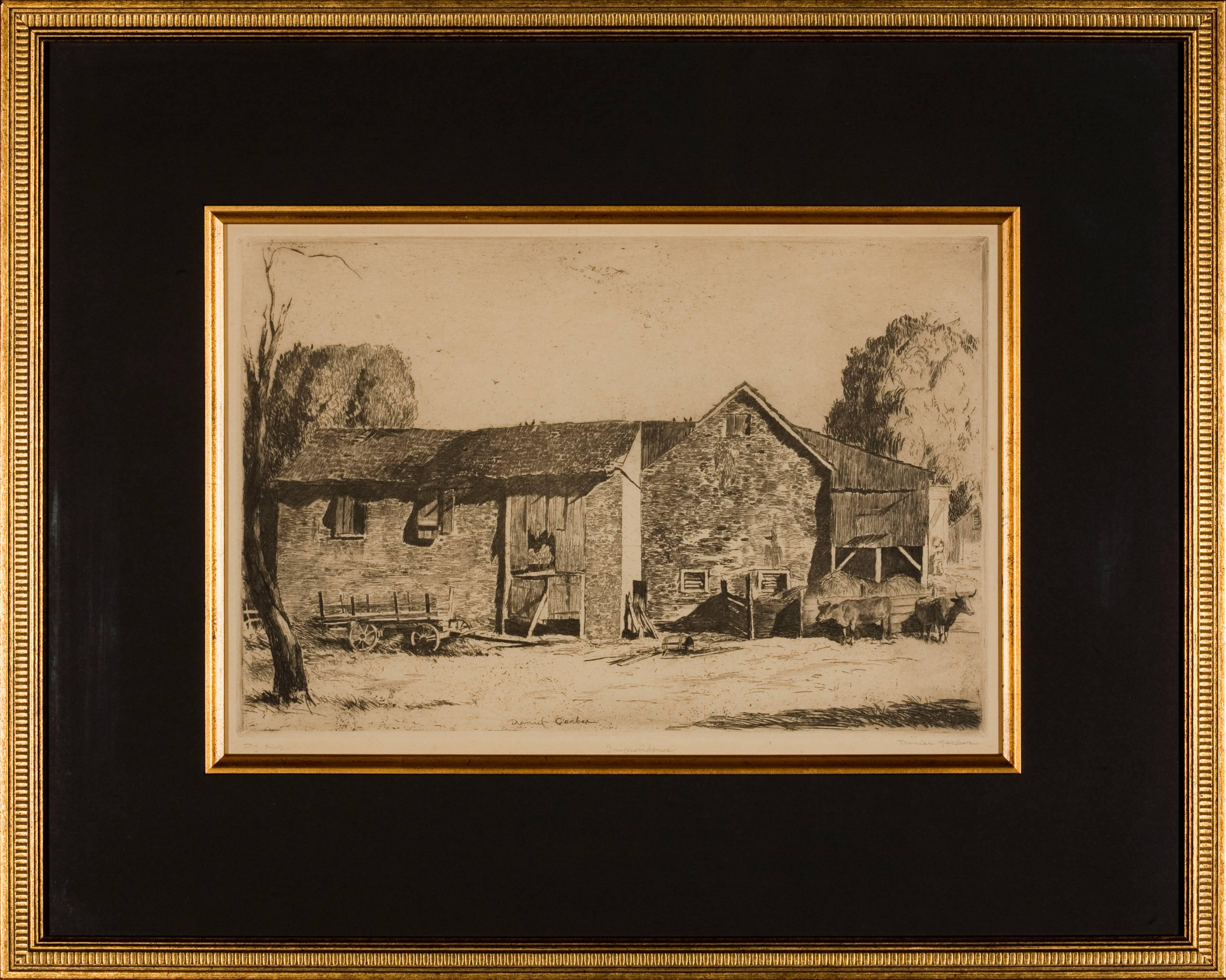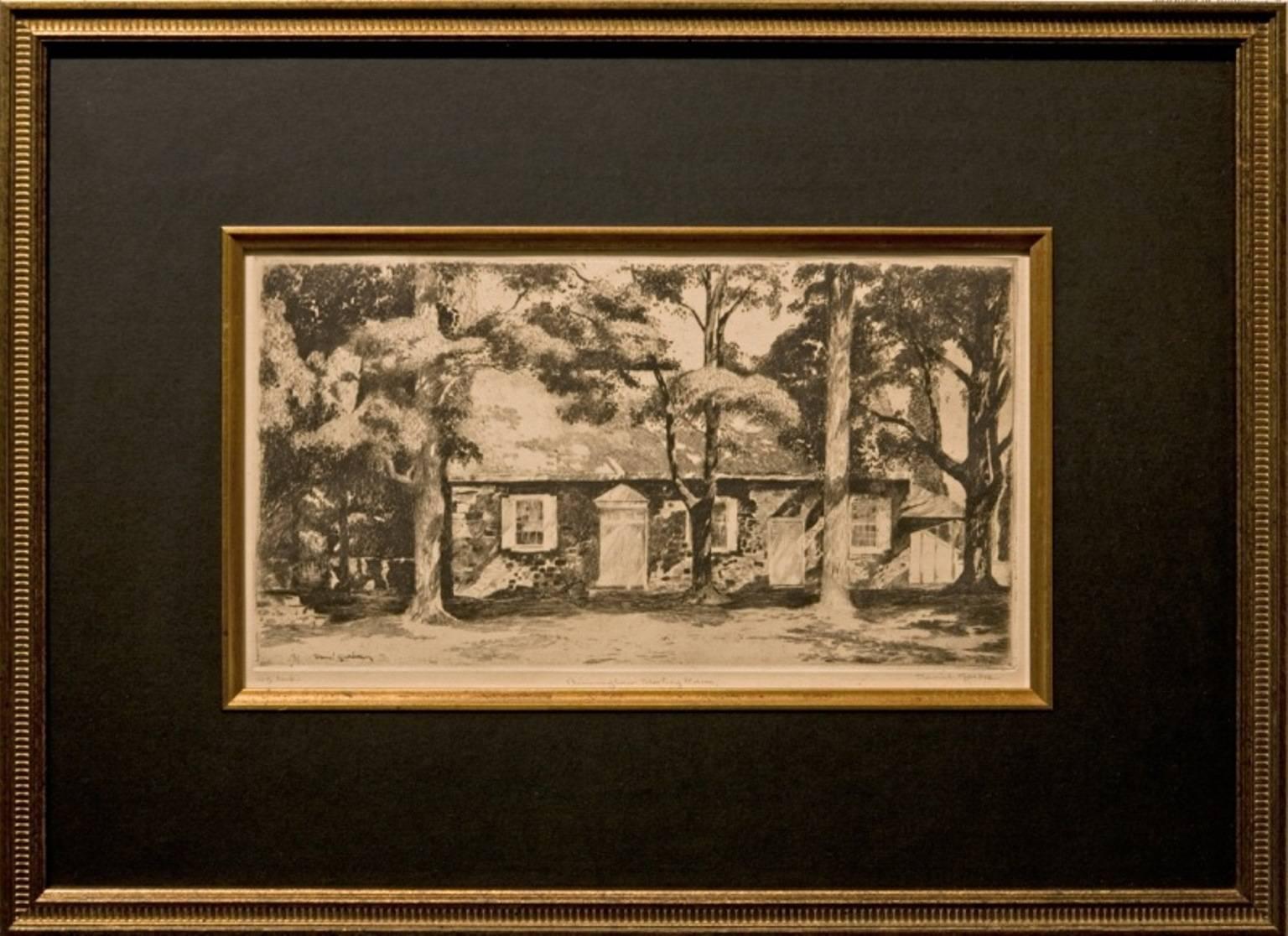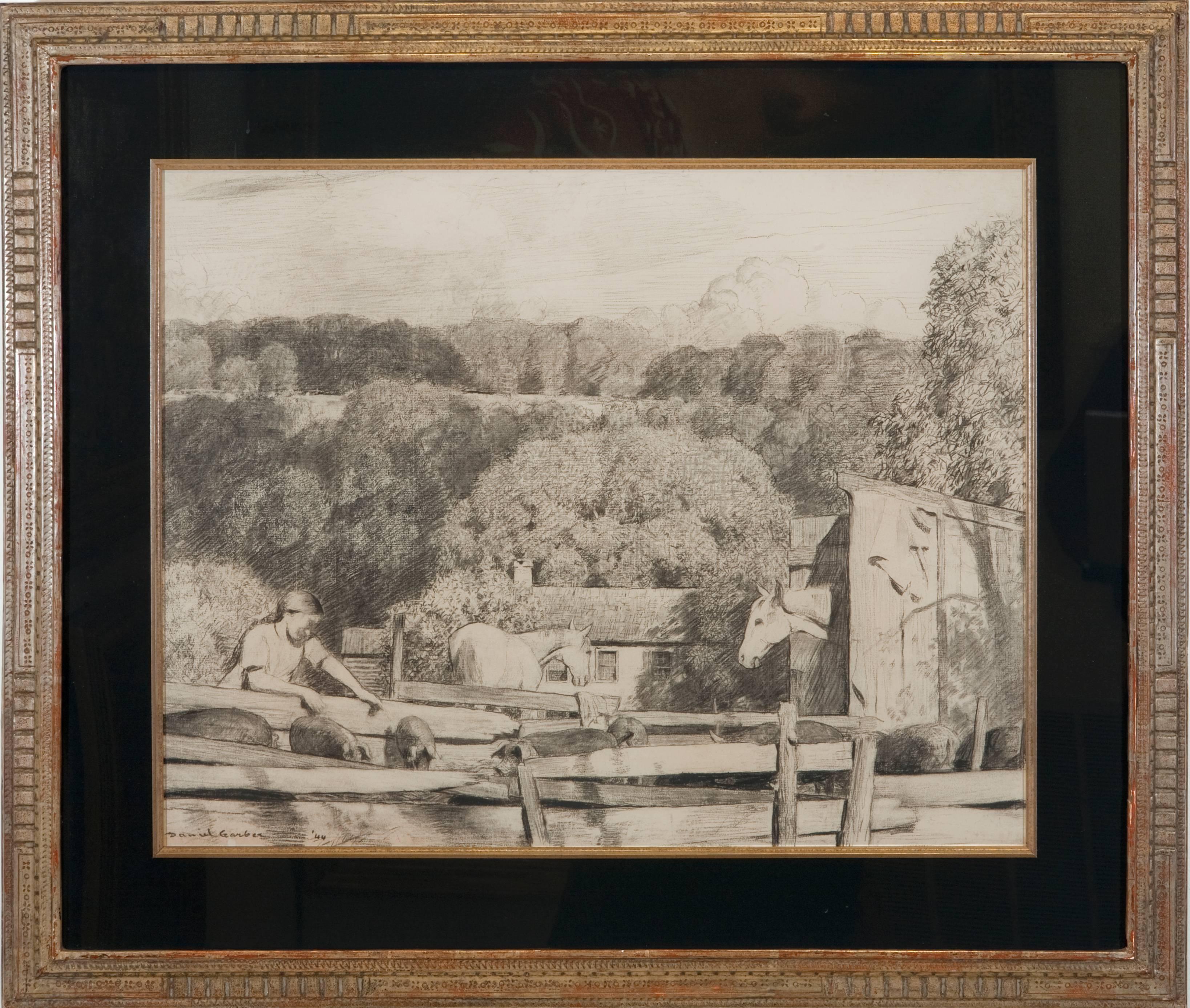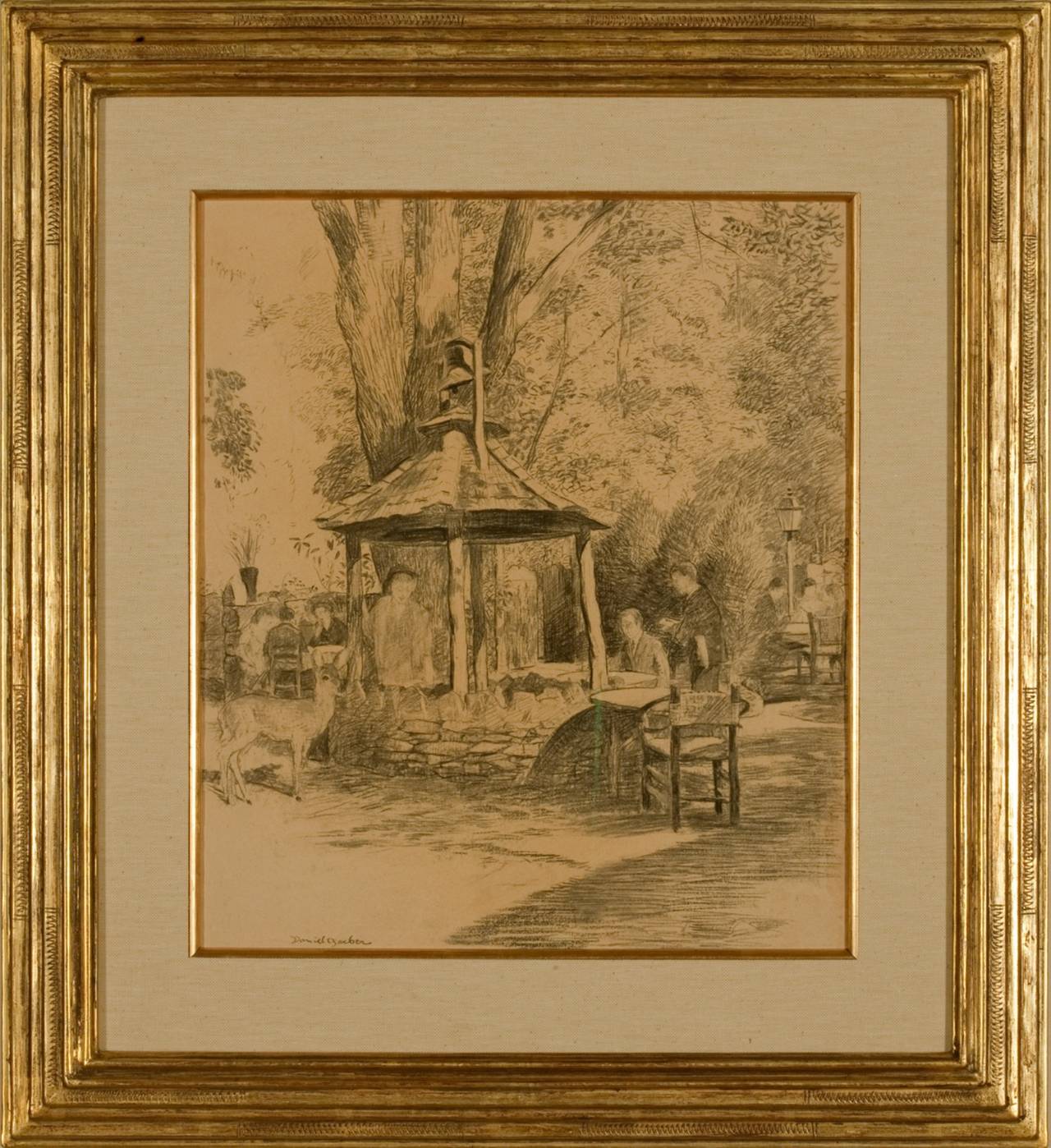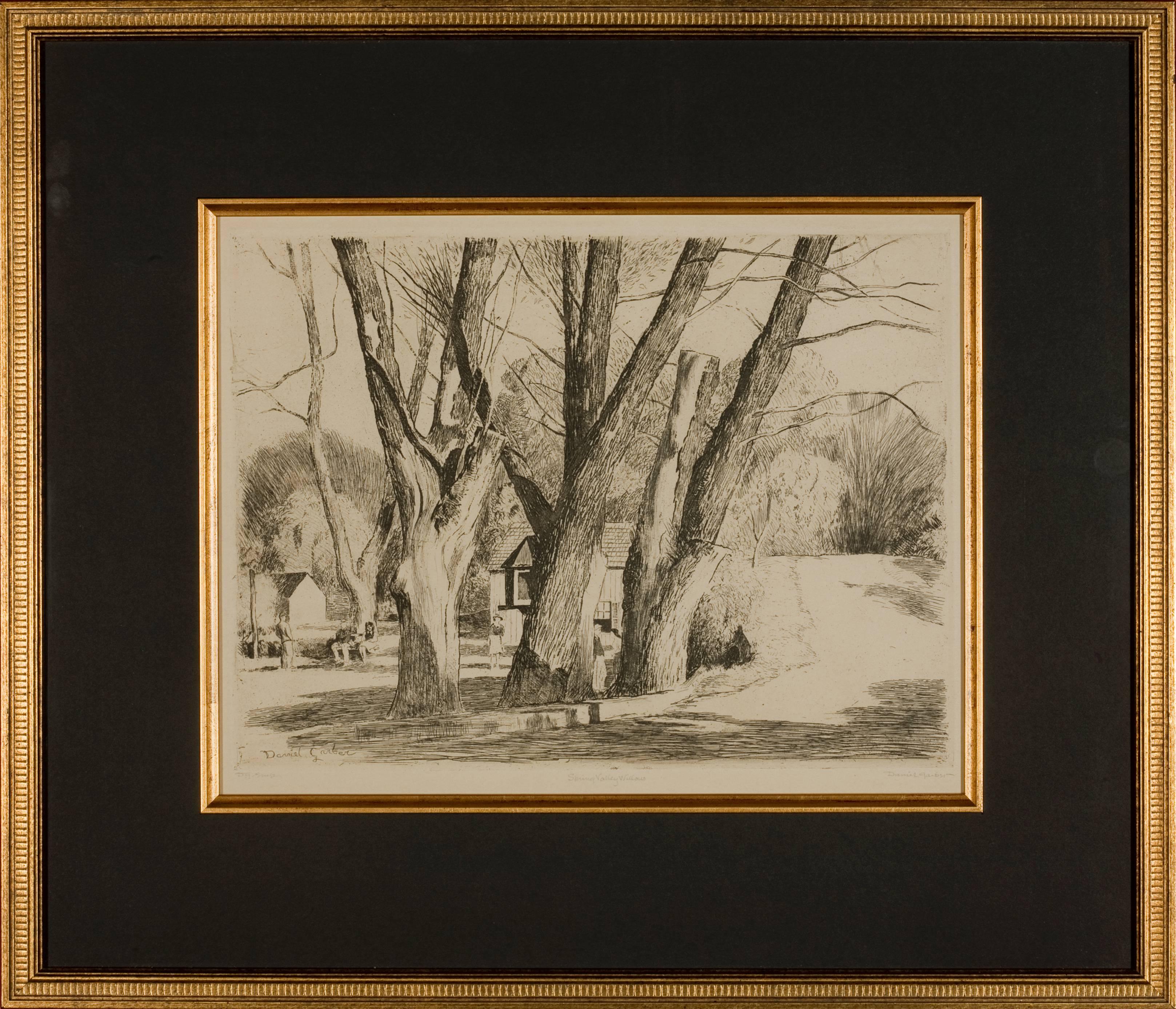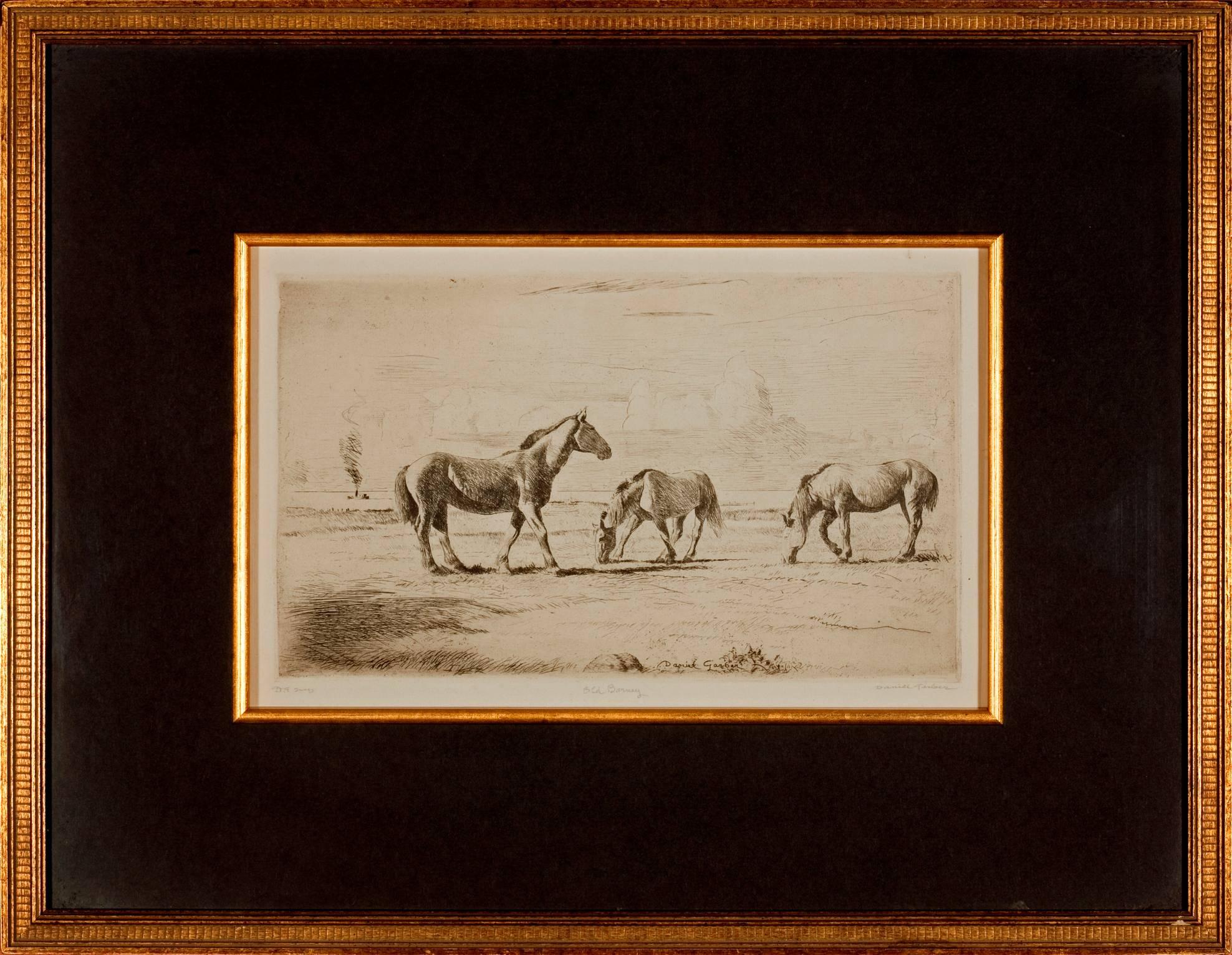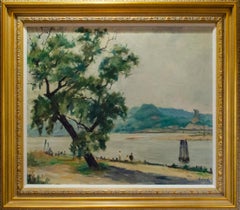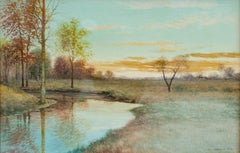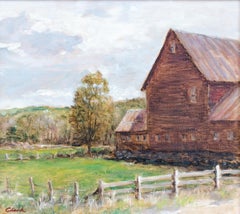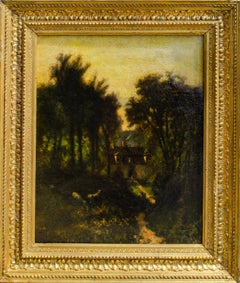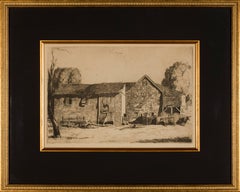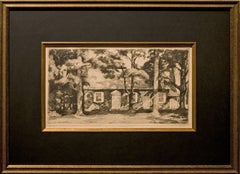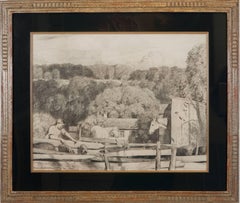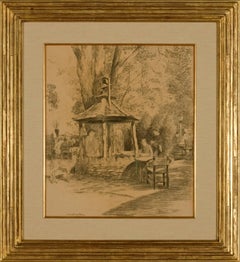Items Similar to Daniel Garber Original Drawing, from Artist's Estate
Want more images or videos?
Request additional images or videos from the seller
1 of 11
Daniel GarberDaniel Garber Original Drawing, from Artist's EstateEarly 20th Century
Early 20th Century
$8,500
£6,409.84
€7,413.29
CA$11,925.45
A$13,255.88
CHF 6,948.45
MX$161,886.41
NOK 86,747.39
SEK 81,613.11
DKK 55,330.66
About the Item
Daniel Garber (American, 1880-1958)
Balderstons, c. Early 20th Century
Pencil on paper
7 x 9 in.
Framed: 12 x 4 x 1/2 in.
Titled and initialed lower right: Balderstons, D.G.
Provenance:
The artist's family, by descent to Tanis Garber (Granddaughter )
Freeman's, Philadelphia, Sale 851, December 13, 1993, lot 710A
Private Collection
This drawing has provenance extending back to the artist's family, and was auctioned at Freeman's in the 1990s. Paperwork accompanies purchase.
Daniel Garber, one of the most interesting and original of the late American impressionists, was born in North Manchester, Indiana, the youngest son of a Mennonite family. As a youth he studied with Frank Duveneck at the Art Academy of Cincinnati, and later at the Pennsylvania Academy with Thomas Anschutz and J. Alden Weir. In 1905 he received a fellowship to study abroad from the Pennsylvania Academy, and while in England he painted works that are the most strictly impressionist of his career.
On his return to America in 1907 he established a studio in Lumbersville in Bucks County, just north of New Hope, Pennsylvania, and in the ensuing years became a central figure in the New Hope art community.
During these years he developed two different modes of painting. His more conventionally impressionistic works were lightly painted with attention to the shape and detail of the subject matter. His other, more popular style was more decorative and poetic, as exemplified in Tohickon [SAAM, 1922.6.3]. Framed by sinuous tree trunks silhouetted in the foreground, a planar regression into the distance is bathed in a soft luminous light. It was a quietly lyrical style distinctly opposed to the bravura technique adopted by his colleagues in the New Hope colony.
In 1919 he began teaching at the Pennsylvania Academy and at his retirement thirty years later was one of its most loved and respected instructors.
Biography sourced from: Emery Battis Artist Biographies for the exhibition American Impressionism: Treasures from the Smithsonian American Art Museum (Washington, D.C.: Smithsonian American Art Museum, 2000)
- Creator:Daniel Garber (1880-1958, American)
- Creation Year:Early 20th Century
- Dimensions:Height: 12 in (30.48 cm)Width: 14 in (35.56 cm)Depth: 0.5 in (1.27 cm)
- Medium:
- Movement & Style:
- Period:
- Condition:Not examined outside of the frame.
- Gallery Location:New York, NY
- Reference Number:1stDibs: LU2211212705152
About the Seller
5.0
Platinum Seller
Premium sellers with a 4.7+ rating and 24-hour response times
1stDibs seller since 2022
87 sales on 1stDibs
Typical response time: <1 hour
- ShippingRetrieving quote...Shipping from: New York, NY
- Return Policy
Authenticity Guarantee
In the unlikely event there’s an issue with an item’s authenticity, contact us within 1 year for a full refund. DetailsMoney-Back Guarantee
If your item is not as described, is damaged in transit, or does not arrive, contact us within 7 days for a full refund. Details24-Hour Cancellation
You have a 24-hour grace period in which to reconsider your purchase, with no questions asked.Vetted Professional Sellers
Our world-class sellers must adhere to strict standards for service and quality, maintaining the integrity of our listings.Price-Match Guarantee
If you find that a seller listed the same item for a lower price elsewhere, we’ll match it.Trusted Global Delivery
Our best-in-class carrier network provides specialized shipping options worldwide, including custom delivery.More From This Seller
View AllGeorge Gách painting of Glenwood Landing, Long Island, signed
By George Gach
Located in New York, NY
George Gách (American, 1909-1996)
The Old Tree in Glenwood Landing, 1957
Oil on canvas
23 x 27 in.
Framed: 26 x 29 1/2 in.
Singed lower right: Gách 1957
Provenance:
Garden City Galleries, Garden City, NY
Includes brochure.
Born in Hungary, George Gách, the son of sculptor Stephen Gách (1880-1962), was noted for sculpture, impressionist painting and teaching. His subjects included animals, people, florals, nudes, cowboys, sports and scenes of Long Island, Bermuda, Mexico, Florida and upstate New York. Among his sculpture subjects are portrait busts of prime ministers, governors, corporate presidents and soccer stars.
He served as a commercial pilot from 1939 to 1952. and in 1944, was shot down and given up as dead. He was also in prisoner of war camps twice during World War II and then in 1947, was almost imprisoned by the communists in Hungary.
Gách graduated form the Academy of Fine Arts in Budapest in 1939, and then immigrated to the United States. He located his studio in Roslyn Heights Long Island, and at one point set a goal...
Category
1950s American Impressionist Landscape Paintings
Materials
Canvas, Oil
New England Watercolor by American Artist George Howell Gay
By George Howell Gay
Located in New York, NY
George Howell Gay (American, 1858-1931)
Untitled Landscape, c. late 19th-early 20th century
Watercolor on board
12 x 17 3/4 in.
Framed: 16 1/4 x 22 1/4 in.
Signed lower right: Geo Howell Gay
George H. Gay was well known for his watercolor landscapes, seascapes and paintings of rivers and ships, mostly along the shores of New England. Gay also painted snowscapes, but these are scarcer. It is unusual to find an oil painting by this artist, as he worked mainly in watercolor. Some of his works display a tonalist aesthetic.
He was born in Milwaukee, Wisconsin on July 2, 1858, and lived in Chicago and then in 1889, settled in Bronxville, New York. Gay was a pupil of Paul Brown and Henry Elkins in Chicago.
He is known to have exhibited at the National Academy of Design in 1890; Boston Art...
Category
Early 20th Century American Realist Landscape Paintings
Materials
Watercolor, Board
Vermont Farmhouse Painting by Henry Thomas Clark
Located in New York, NY
Henry Thomas Clark (American, 1929-2000)
Untitled, 20th Century
Oil on canvas
16 x 18 1/8 in.
Framed: 21 x 23 x 1 3/8 in.
Signed lower left: Clark
Category
20th Century American Impressionist Landscape Paintings
Materials
Canvas, Oil
Charles Henry Miller Tonalist Countryside landscape Painting 1876
Located in New York, NY
Countryside, 1876
Oil on canvas
13 1/2 x 11 in.
Framed: 17 1/2 x 15 x 1 1/2 in.
Signed lower left and dated 1876
Category
1870s English School Landscape Paintings
Materials
Canvas, Oil
Charles Henry Miller Impressionist Landscape Oil Painting
By Charles Henry Miller
Located in New York, NY
Charles Henry Miller (American, 1842-1922)
Untitled (New York Landscape), c. 1900
Oil on canvas laid on foam
6 1/8 x 10 5/8 in.
Signed lower left: C.H.M.
Charles Henry Miller was a noted artist and painter of landscapes from Long Island, New York. The American poet Bayard Taylor called him, "The artistic discoverer of the little continent of Long Island."
Miller was educated at Mount Washington Collegiate Institute, and graduated in medicine at the New York Homeopathic Institute in 1864. Before his graduation, he had occasionally painted pictures, and in 1860 he exhibited The Challenge Accepted at the National Academy of Design, in New York City.
He lived in Queens at the summer estate, Queenslawn, originally purchased by his parents. He went abroad in 1864 and again in 1867, and was a pupil in the Bavarian Royal Academy at Munich under the instruction of Adolf Lier.
After the 1874 death of his father, Jacob Miller, who was a wealthy architect and builder, Miller received a large inheritance that allowed him to paint as an independent artist for the remainder of his long life. He worked seriously and exhibited regularly, including at international exhibitions.
The majority of his oil paintings depict Long Island subjects, especially those in and around Queens Village. Fed up with the development of the eastern part of Queens (present-day Nassau County), he began to spend part of his summers in East Marion, Long Island, c. 1910. Here he spent his time sketching and painting the surrounding areas.
In 1885 he published The Philosophy of Art in America, using the pseudonym Carl De Muldor (he was descended from the De Muldor family).
His work was recognized: in 1873, he was elected an associate of the National Academy of Design and an academician in 1875. He served as president of the New York Art Club in 1879 and of the American Committee at the Munich International Exposition in 1883.
Legacy and honors
• In 1910 Miller founded the Queens Borough Allied Arts & Crafts Society.
• A New York City public school, Queens P.S. 33, was once named for him.
• 1878, gold medal awarded by the Massachusetts Charitable Association
• 1885, gold medal at the World's Exposition in New Orleans.
Following is a list, which includes many of his known exhibitions:
• National Academy of Design, New York, NY, 1860-61, 1865-67, 1870-1921
• Brooklyn Art Association, Brooklyn, NY, 1872-84, 1891-92
• Artist's Fund Society, New York, NY, 1874 (exhibition & sale), 1886 (exhibition & sale)
• Century Association, New York, NY, (1874-1917)
• Philadelphia Centennial Exhibition, Philadelphia, PA, 1876 (prize)
• Society of American Artists, New York, NY, (1878-1882)
• Massachusetts Charitable Mechanic Association, Boston, MA, 1878 (prize)
• Paris International Exposition, Paris, France, 1878, 1889
• American Water Color Society Exhibition, New York, NY, 1879
• Pennsylvania Academy of Fine Arts, Philadelphia , PA, 1879-99
• Boston Art Club, Boston, MA, 1880-1907 (prize)
• Union League Club, New York, NY, 1880
• Lotos Club, New York, NY, 1880, 1896, 1899-1900, 1906
• Salons of Paris, Paris, France, 1882
• International Exhibition, Munich, Germany, 1883 (president & exhibitor)
• New Orleans Exposition, New Orleans, LA, 1885 (prize)
• Art Institute of Chicago, Chicago, IL, 1888-89, 1891, 1894-98, 1904
• Fifth Avenue Art Gallery, New York, NY, 1889 (exhibition & sale)
• World's Columbian Exposition, Chicago, IL, 1892
• Frederick A. Chapman Gallery, New York, NY, 1898 (solo)
• Miller Studio...
Category
Early 20th Century American Impressionist Landscape Paintings
Materials
Canvas, Foam, Oil
Ernest Biddle New England Coastline Impressionist Painting
Located in New York, NY
Ernest Biddle (American, 1919-1970)
Untitled Coastal Town, Likely New England, 20th century
Oil on canvas
16 x 20 x 1/2 in.
Signed lower left: Biddle
The great grandson of the found...
Category
20th Century American Impressionist Landscape Paintings
Materials
Oil, Canvas
You May Also Like
"Improvidence"
By Daniel Garber
Located in Lambertville, NJ
Jim’s of Lambertville Fine Art Gallery is proud to present this piece by Daniel Garber (1880 - 1958).
One of the two most important and, so far, the most valuable of the New Hope Sc...
Category
1920s American Impressionist Landscape Prints
Materials
Etching
"Birmingham Meeting House"
By Daniel Garber
Located in Lambertville, NJ
Jim’s of Lambertville Fine Art Gallery is proud to present this piece by Daniel Garber (1880 - 1958).
One of the two most important and, so far, the most valuable of the New Hope Sc...
Category
1930s American Impressionist Landscape Prints
Materials
Etching
"Pigs"
By Daniel Garber
Located in Lambertville, NJ
Jim’s of Lambertville Fine Art Gallery is proud to present this piece by Daniel Garber (1880 - 1958).
One of the two most important and, so far, the most valuable of the New Hope Sc...
Category
1940s American Impressionist Landscape Drawings and Watercolors
Materials
Charcoal
$49,375
"Lunch at the Stockton Inn"
By Daniel Garber
Located in Lambertville, NJ
Jim’s of Lambertville is proud to offer this artwork.
Signed lower left. Pencil drawing.
Complemented by a hand carved and gilt frame.
Daniel Garber (1880-1958)
...
Category
20th Century American Impressionist Landscape Drawings and Watercolors
Materials
Pencil, Paper
"Spring Valley Willows"
By Daniel Garber
Located in Lambertville, NJ
Jim’s of Lambertville Fine Art Gallery is proud to present this piece by Daniel Garber (1880 - 1958).
One of the two most important and, so far, the most valuable of the New Hope School Painters, Daniel Garber was born on April 11, 1880, in North Manchester, Indiana. At the age of seventeen, he studied at the Art Academy of Cincinnati with Vincent Nowottny. Moving to Philadelphia in 1899, he first attended classes at the "Darby School," near Fort Washington; a summer school run by Academy instructors Anshutz and Breckenridge. Later that year, he enrolled at the Pennsylvania Academy of the Fine Arts. His instructors at the Academy included Thomas Anshutz, William Merritt Chase and Cecilia Beaux. There Garber met fellow artist Mary Franklin while she was posing as a model for the portrait class of Hugh Breckenridge. After a two year courtship, Garber married Mary Franklin on June 21, 1901.
In May 1905, Garber was awarded the William Emlen Cresson Scholarship from the Pennsylvania Academy, which enabled him to spend two years for independent studies in England, Italy and France. He painted frequently while in Europe, creating a powerful body of colorful impressionist landscapes depicting various rural villages and farms scenes; exhibiting several of these works in the Paris Salon.
Upon his return, Garber began to teach Life and Antique Drawing classes at the Philadelphia School of Design for Women in 1907. In the summer of that same year, Garber and family settled in Lumbertville, Pennsylvania, a small town just north of New Hope. Their new home would come to be known as the "Cuttalossa," named after the creek which occupied part of the land. The family would divide the year, living six months in Philadelphia at the Green Street townhouse while he taught, and the rest of the time in Lambertville. Soon Garber’s career would take off as he began to receive a multitude of prestigious awards for his masterful Pennsylvania landscapes. During the fall of 1909, he was offered a position to teach at the Pennsylvania Academy as an assistant to Thomas Anshutz. Garber became an important instructor at the Academy, where he taught for forty-one years.
Daniel Garber painted masterful landscapes depicting the Pennsylvania and New Jersey countryside surrounding New Hope. Unlike his contemporary, Edward Redfield, Garber painted with a delicate technique using a thin application of paint. His paintings are filled with color and light projecting a feeling of endless depth. Although Like Redfield, Garber painted large exhibition size canvases with the intent of winning medals, and was extremely successful doing so, he was also very adept at painting small gem like paintings. He was also a fine draftsman creating a relatively large body of works on paper, mostly in charcoal, and a rare few works in pastel. Another of Garber’s many talents was etching. He created a series of approximately fifty different scenes, most of which are run in editions of fifty or less etchings per plate.
Throughout his distinguished career, Daniel Garber was awarded some of the highest honors bestowed upon an American artist. Some of his accolades include the First Hallgarten Prize from the National Academy in 1909, the Bronze Medal at the International Exposition in Buenos Aires in 1910, the Walter Lippincott Prize from the Pennsylvania Academy and the Potter Gold Medal at the Art Institute of Chicago in 1911, the Second Clark Prize and the Silver Medal from the Corcoran Gallery of Art for “Wilderness” in 1912, the Gold Medal from the Panama-Pacific Exposition in San Francisco of 1915, the Second Altman Prize in1915, the Shaw prize in 1916, the First Altman Prize in 1917, the Edward Stotesbury Prize in1918, the Temple Gold Medal, in 1919, the First William A...
Category
1940s American Impressionist Landscape Prints
Materials
Etching
"Old Barney"
By Daniel Garber
Located in Lambertville, NJ
Jim’s of Lambertville Fine Art Gallery is proud to present this piece by Daniel Garber (1880 - 1958).
One of the two most important and, so far, the most valuable of the New Hope Sc...
Category
Mid-20th Century American Impressionist Landscape Prints
Materials
Etching
